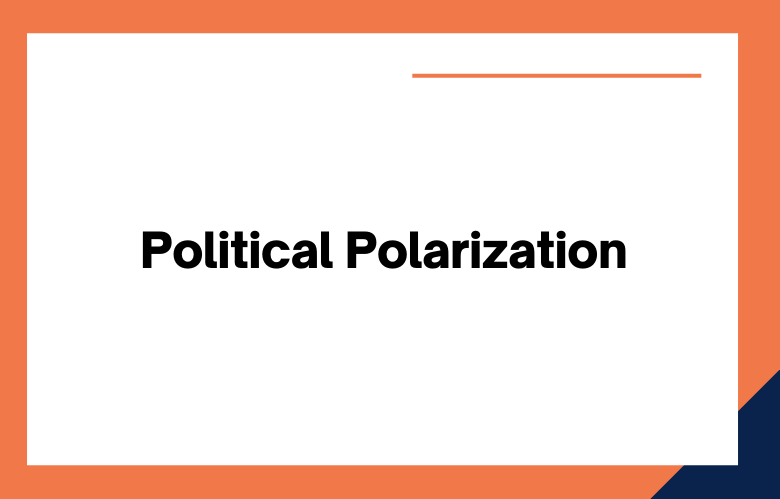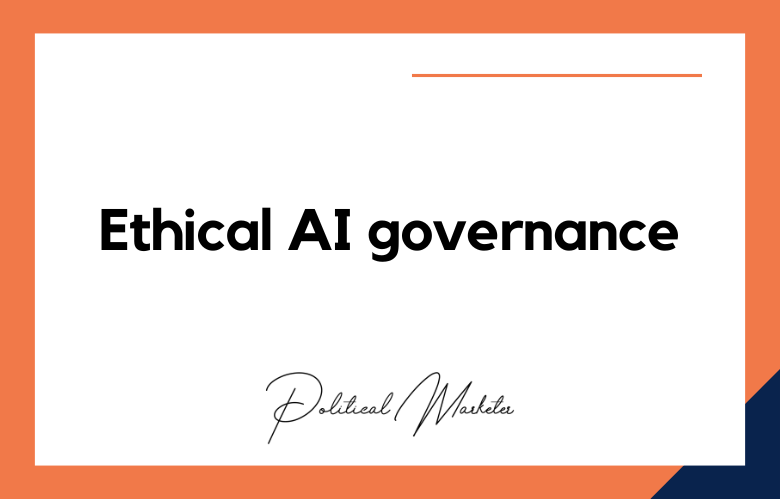Campaigns have always been about winning over hearts and minds. This has meant personal interactions, advertisements, and speeches in the past. However, campaigns are becoming more polarized with the advent of new technology, where political Polarization plays a vital role. Instead of reaching a broad audience, candidates energize their base while alienating the other side. This could have disastrous consequences for our democracy.
Technology has always been a big player in political campaigns, and its role is only becoming more critical. To be successful, candidates must cater to their base supporters rather than appeal to the entire electorate. This ebb and flow of the political pendulum will continue, partly thanks to technology’s ever-growing impact on politics.
What is a Political Polarization?
Political Polarization is the separation of political parties into extreme groups with very different ideologies.
Political Polarization refers to the state of a country or society in which politics has been polarized between different sides.
Political Polarization is a situation in which the political views of the general public have become more extreme, with opposing sides often giving both inaccurate and inconsistent information.
Political Polarization refers to a divided electorate. The electorate is polarized when two dominant political groups have different opinions on the same issue.
Political Polarization is when people have different views on the same issue.
Use of Technology in Political Campaigns and Polarization
The use of technology in political campaigns has become a powerful tool to reach out to voters. Both parties use it, but the Republicans are more active and effective at using technology when campaigning for elections.
Studying the effect of technology on political campaigns is crucial because it helps us understand how politicians can rally support for their agenda.
In recent years Political campaigns have changed dramatically. So has the information propagated about political parties—one of the most significant changes in how technology and new media platforms spread information about candidates.
Social media and new digital platforms have offered an excellent opportunity for politicians to promote their campaigns, reach out to voters, and gain support from groups.
Technology has become necessary in our everyday lives, and people have become more divided with social media.
Technology has been used in political campaigns since the 1990s. It is primarily used to gain more supporters and increase donations but it can also spread misinformation or hate speech.
It was common for politicians to reach out to their constituents through technology in political campaigning. It led to polarization between parties and pro-technology and anti-technology views.
The use of technology in political campaigns has created a new way to communicate with the public. For example, Facebook is being used by both parties to promote their policies and offer voters helpful information.
Best Practices of Using Technology in Political Campaigns and Polarization
Technology is a two-edged sword. It has the power to unite people, but it can also divide them.
Technology can become a blessing and a curse. It can help us live more organized, streamlined lives, but it can also be very distracting.
Technology has been used in political campaigns for a long time. It started with television and now includes digital media such as social networks, mobile applications, and internet videos.
- The changing landscape of technology in politics
- Best practices for using technology in political campaigns
- How to manage and monitor social media platforms
- Understanding the impact of Polarization on technology usage
- The use of technology in political campaigns
- Effectiveness of technology in terms of reaching out to voters
- The use of technology for fundraising purposes
- Social media and its impact on Polarization among voters
- Use technology to connect with voters
- Use technology to get your message out
- Understand how people use technology
- Be transparent in your use of technology
- Resist the urge to be harmful or attack your opponent
- Don’t rely on technology to win the election
- Understand the basics of how technology is used in political campaigns
- Learn about the different types of technologies that are available
- Identify which technologies are best for your campaign
- Determine how to use technology to reach your target audience
- Understand the effects of technology on political campaigns and Polarization
- Understand the technology landscape
- Use technology to target potential voters
- Build a social media presence
- Collect and store data
- Use targeted advertising
- Mobilize supporters
- Keep your message consistent
Technology has changed the way people interact with each other and how they learn about political issues. With technology, it’s easier for candidates to communicate their ideas to the public more often.
Technology and social media can be helpful in political campaigns, but some Polarization issues arise when using these medium types.
Technology has dramatically impacted how political campaigns are run, and this essay explores some of technology’s best practices in campaign management.
The use of technology in political campaigns, such as websites, Facebook, Twitter, and other social media, is essential.
Conclusion
The use of technology in political campaigns has both positives and negatives. Understanding the implications of using different technologies before deciding whether to use them is essential. At Polaris, we understand the power of technology in politics and are here to help you navigate these waters. Reach us today to get information about our Political Campaigns Consulting services. We would happily discuss your specific needs and help you reach your goals.
Polarization and the use of technology in Political Campaigns: FAQs
What Is Political Polarization in Campaigns?
Political polarization refers to the growing ideological divide between voters or parties, often amplified during election campaigns for strategic gain.
How Do Political Campaigns Contribute to Polarization?
Campaigns may use divisive rhetoric, fear-based messaging, and identity politics to mobilize core supporters, often deepening societal divisions.
Is Polarization Always a Deliberate Strategy in Politics?
Not always. While some campaigns intentionally polarize to energize their base, others contribute unintentionally through issue framing or echo chambers.
What Role Does Social Media Play in Political Polarization?
Social media amplifies extreme views, encourages tribalism, and allows microtargeting of polarizing content to segmented audiences.
Can Polarization Help a Political Campaign Win Elections?
Yes, it can solidify a loyal base, increase turnout, and simplify messaging, but it may also alienate moderates and erode democratic consensus.
How Does Negative Advertising Influence Polarization?
Negative ads often fuel polarization by framing opponents as threats or enemies rather than competitors, leading to emotional voter responses.
What Is the Impact of Polarization on Voter Behavior?
Polarization can lead to strong party loyalty, reduced willingness to compromise, and increased political hostility or misinformation susceptibility.
Do Political Consultants Use Data to Amplify Polarization?
Yes, data analytics and psychographic profiling can be used to identify emotional triggers and tailor content that intensifies division.
Can Polarization Undermine Democratic Institutions?
Prolonged polarization may erode trust in institutions, delegitimize opponents, and foster zero-sum politics that hinder effective governance.
What Is the Difference Between Ideological and Affective Polarization?
Ideological polarization is about policy differences, while affective polarization refers to emotional dislike or hostility toward opposing groups.
Are There Historical Examples of Polarized Campaigns?
Yes, many elections globally have featured polarization, such as India’s 2014 and 2019 general elections or the US elections in 2016 and 2020.
How Do Echo Chambers and Filter Bubbles Relate to Polarization?
They reinforce existing beliefs, limit exposure to alternative views, and contribute to radicalization or increased partisanship online.
What Role Does Media Framing Play in Political Polarization?
Media framing shapes public perception by emphasizing conflict, using sensational language, and highlighting polarizing voices or narratives.
Can Polarization Be Reduced During a Political Campaign?
Yes, campaigns can focus on common ground, inclusive messaging, issue-based debates, and bridge-building narratives.
What Are the Risks of Over-Polarization for a Democracy?
Risks include legislative gridlock, civil unrest, voter apathy, disinformation, and weakening of democratic norms and institutions.
Do Voters Recognize When They Are Being Polarized?
Some do, but many are unaware of how messaging, social algorithms, and group identity influence their political attitudes.
How Do Political Campaigns Balance Passion with Polarization?
Effective campaigns energize voters without vilifying opponents by focusing on vision, values, and respectful disagreement.
Can AI and Data Science Reduce or Reinforce Polarization?
Both. AI can identify bridge topics and promote civility or be used to deliver hyper-partisan content based on emotional profiling.
What Is the Role of Civil Society in Combating Polarization?
Civil society groups can promote dialogue, fact-checking, voter education, and platforms for cross-partisan collaboration.
Should Political Parties Be Held Accountable for Polarization?
Yes, parties have a responsibility to uphold democratic norms, foster inclusive discourse, and avoid strategies that damage social cohesion.
One way to get in touch is by filling out our online form on this site or give us a call at
+91 9848321284. Let’s work together today!











